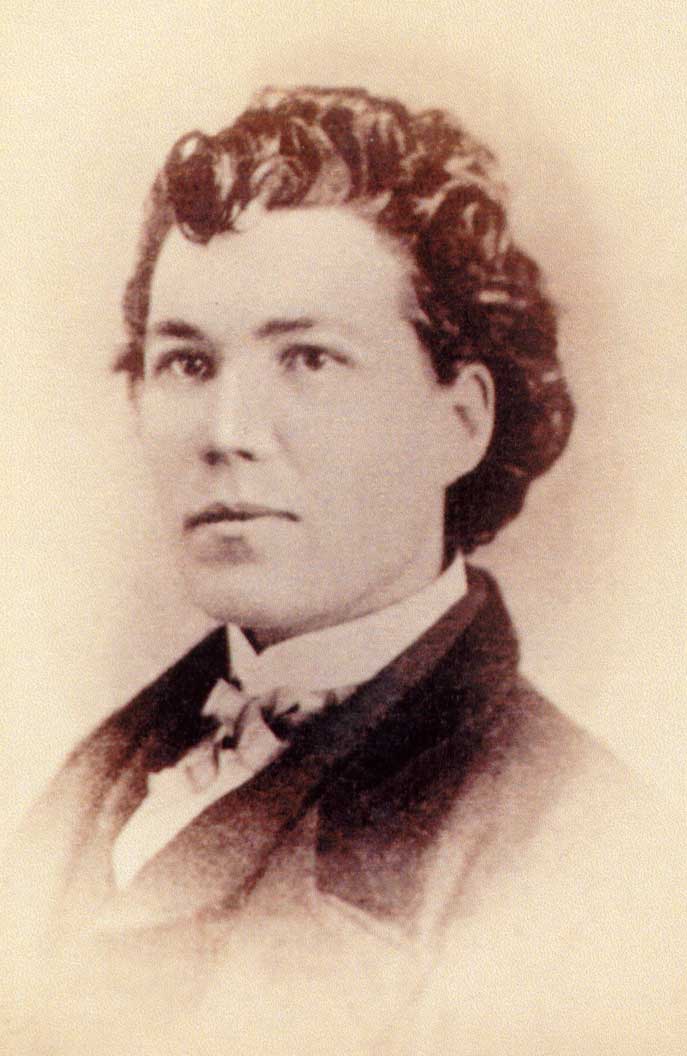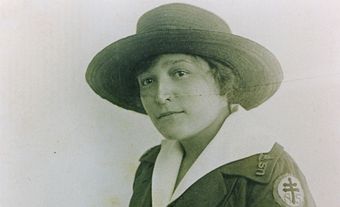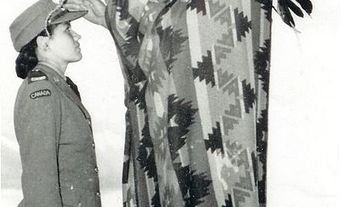
Sarah Emma Edmonds (aka Franklin Thompson), nurse, soldier, master of disguise (born December 1841 in the Magaguadavic settlement, New Brunswick; died 5 September 1898 in LaPorte, Texas). Edmonds disguised herself as a man and served as a male nurse in the Union Army during the American Civil War. According to her autobiography, she also conducted numerous spy missions behind Confederate lines.
Early Life
Edmonds was born on a farm, the youngest of six children of Isaac and Elizabeth Edmondson. Isaac was disappointed at having five girls and one epileptic son. In a fruitless attempt to win his approval, Sarah Edmonds learned to ride, shoot and hunt. Her mother taught her nursing skills. Edmonds’ love for adventure was inspired by Maturin Murray Ballou’s novel Fanny Campbell: the Female Pirate Captain, in which the protagonist disguises herself as a man.
At age 17, Edmonds ran away from home to avoid a marriage to an older man arranged by her father. Fearing pursuit, she took on a new identity.
Franklin Thompson
Edmonds cut her hair short, had a mole removed from her cheek, and wore men’s clothes. She adopted the name Franklin Thompson, and was employed as a travelling representative of a publishing company, selling Bibles in New Brunswick and Nova Scotia. She was promoted and transferred to Flint, Michigan, where she resided when the Civil War began on 12 April 1861.
Edmonds was anti-slavery, but also a Christian pacifist. This presented a dilemma — should she support the anti-slavery aims of the Union forces, even if this meant also supporting war? Edmonds solved the dilemma by enlisting as a male nurse. In May, posing as Thompson, Edmonds joined a regiment called the Flint Union Grays, which became Company F of the 2nd Michigan Infantry. She worked as a field nurse during the First Battle of Bull Run, and then in the Mansion House hospital in Alexandria, Virginia. Thompson gained a reputation for compassion and devotion to duty.
Mail Carrier and Spy
In March 1862, during the war's Peninsula Campaign, Colonel Orlando Poe appointed Thompson as regimental mail carrier, delivering mail by horseback to various army camps. Edmonds thus became familiar with the countryside.
In April the Confederates broke up a Union spy network in Richmond, Virginia, and executed one of its key members. General George B. McLellan, commander of the Union’s Army of the Potomac, needed new volunteers for espionage behind enemy lines. This marked the beginning of the most controversial period of Edmonds’ life.
According to Edmonds’ autobiography, Poe recommended Thompson to McLellan. At US Secret Service headquarters in Washington, DC, Edmonds — as Thompson — was interviewed by McLellan and other officers. She was tested for proficiency with firearms and given a phrenological examination. Having met all qualifications, Edmonds was sent on a spying mission into the Confederate stronghold at Yorktown, Virginia.
Edmonds’ account describes how she used silver nitrate to colour her skin black, wore a wig and shabby clothes, and passed through enemy lines posing as a slave. She used that disguise on subsequent missions, and also passed herself off as a female Irish peddler and a Confederate soldier. She usually gathered useful information, and on one occasion brought back a packet of documents that had fallen from a Confederate officer’s pocket.
In April 1863, Edmonds fell ill with malaria. To prevent her secret being discovered by an army doctor, she went to a private hospital as Emma Edmonds — her first use of the shortened version of her name. By the time she recovered, Frank Thompson was wanted for desertion, for which the penalty was death. For the remainder of the war, Edmonds worked as a nurse in a Washington, DC military hospital.
True or False?
Edmonds' book, Nurse and Spy in the Union Army, published in 1865, is a mixture of fact and fiction. Civil War historians dismiss many of Edmonds’ claims, such as her shooting of a Confederate cavalry officer. Although documentation shows a Frank Thompson serving as a nurse and mail carrier, there is no record of him being a spy.
However, documented evidence supports some of Edmonds’ story. The journal of Thompson’s close friend Jerome Robbins states that “Frank” revealed the secret to him. Others who knew Thompson, including Poe, said he was “effeminate-looking.”
In the Civil War’s early stages, Union espionage operations weren’t well organized. Generals employed their own spies, whose activities were often unrecorded. Muster rolls show Thompson absent from duty on dates that correspond with those of Edmonds’ alleged spy missions. Prior to the publication of Edmonds’ autobiography, Adjutant General John Robertson wrote, “Thompson [was] often employed as a spy, going within the enemy’s lines, sometimes absent for weeks, and is said to have furnished much valuable information.”
After the war, Edmonds married fellow New Brunswicker Linus Seelye, and settled on a farm in Texas. She successfully applied for an honourable discharge issued for Franklin Thompson, and was granted a pension for her wartime services. Edmonds was the only woman admitted to the Grand Army of the Republic, the Union Army’s veterans’ organization. In 1992 she was inducted into the Michigan Women’s Hall of Fame.

 Share on Facebook
Share on Facebook Share on X
Share on X Share by Email
Share by Email Share on Google Classroom
Share on Google Classroom


